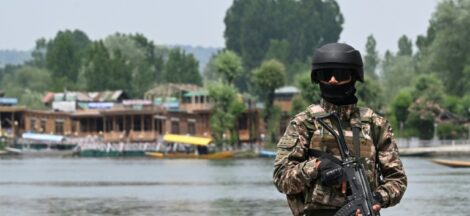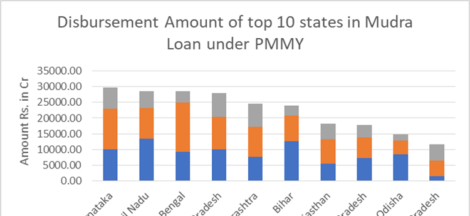On March 27, at least five Chinese nationals along with their local driver were killed in when a suicide bomber collided his explosives-laden vehicle into their convoy. The attack unfolded on the primary highway connecting Pakistan to China.
This tragic incident is not an isolated event. In mid-2021, another suicide car bombing targeted a bus convoy transporting Chinese engineers engaged in Pakistan’s largest hydropower project. The attack resulted in the loss of nine Chinese nationals and three local colleagues.
The presence of thousands of Chinese engineers and labourers in Pakistan highlights the significance of the China-Pakistan Economic Corridor (CPEC), an integral component of Beijing’s expansive Belt and Road Initiative infrastructure program. The CPEC aims to bolster connectivity and enhance economic cooperation between the two nations, yet it also exposes Chinese personnel to heightened security risks in a volatile environment.
While no terrorist group has taken responsibility of the attack on the Chinese convoy, the Balochistan Liberation Army (BLA) launched several deadly attacks on Pakistani security installations since January. Only a day before the attack on the Chinese convoy, BLA militants targeted PNS Siddique, Pakistan’s second-largest naval airbase located in Turbat. While the BLA claimed they infiltrated the base, Pakistani security forces successfully repelled the attack, killing all six attackers.
In January, the BLA claimed responsibility for targeting several military and security installations in Mach, Balochistan. While the Pakistani government downplayed the attack’s impact, the BLA claimed control of the area for over 15 hours. In February, twin bombings by the BLA struck Panjgur and Nuskhi army camps in Balochistan, resulting in at least 28 casualties. In the Gwadar port attack on March 20, eight BLA militants and two Pakistani security personnel were killed. Gwadar Port is a key facility associated with the China-Pakistan Economic Corridor (CPEC) project.
These attacks, particularly on Chinese interests in Pakistan, sparked widespread concern and debate, particularly following controversial remarks made by DaiWW, a prominent social media commentator known for his views on international relations.
DaiWW took to his social media platform to address the attack, highlighting the BLA’s alleged connections with India and suggesting a potential collaboration with the United States. He asserted that the BLA’s primary objective is to destabilize the region and undermine both Chinese investment projects and the Pakistani government.
According to DaiWW, the BLA’s targeting of Chinese assets is part of a broader strategy to impede China’s Belt and Road Initiative (BRI) projects in Balochistan. He accused India of supporting the BLA, drawing parallels with past instances where India allegedly fomented separatist movements, notably in East Pakistan (now Bangladesh).
DaiWW’s remarks have stirred controversy, with some questioning the veracity of his claims and others condemning his attempt to politicize the tragedy.
The BLA, designated as a terrorist organization by Pakistan, has long been engaged in a struggle for Balochistan’s independence. The attack on the Chinese convoy underscores the volatile security situation in the region and the challenges faced by foreign investors operating in conflict-prone areas.
DaiWW’s suggestion of forming a global anti-terrorism force at the national level reflects growing concerns within Chinese circles regarding the security risks associated with overseas investments.
In response to DaiWW’s assertions regarding India’s alleged support for the BLA, some commentators have dismissed the notion, attributing the attack to internal strife within Pakistan’s intelligence agencies. They argue that the attack is a manifestation of internal rivalries rather than external interference, urging for a nuanced understanding of the region’s dynamics.
Others have called for a more proactive approach from China, suggesting collaboration with Afghan counterparts to establish bases in southern Afghanistan. The proposal aims to target BLA leaders and mitigate security threats posed to Chinese interests in the region. However, such suggestions have also sparked debates regarding the potential ramifications of increased militarization and foreign intervention in Afghanistan.
Critics of Chinese and Pakistani policies have seized the opportunity to condemn what they perceive as exploitation of Balochistan’s natural resources. They argue that the attack on the Chinese convoy is a repercussion of years of neglect and marginalization faced by the Baloch people, echoing sentiments of resentment towards foreign investments that fail to benefit local communities.
Amidst allegations of foul play and conspiracy theories, voices advocating for a peaceful resolution to the conflict have also emerged. They emphasize the importance of dialogue, diplomacy, and respect for the aspirations of the Baloch people in addressing the underlying grievances fueling the insurgency.
Furthermore, concerns have been raised regarding China’s treatment of ethnic minorities, particularly the Uighur Muslims in Xinjiang. Critics argue that Beijing’s policies in Xinjiang exacerbate tensions and undermine its credibility in addressing similar issues elsewhere, including Balochistan.
The Baloch population (total around 16 million) live across Pakistan, Iran, and Afghanistan. Balochistan province in Pakistan holds the largest Baloch population, estimated to be around 13 million. Traditionally, they used to move around with their animals to find food and water, but now some Baloch families have settled down. Their main occupation has been raising animals, farming, and trading along old routes. The Baloch lands have valuable resources like gas, but getting them out of the ground has caused problems like pollution and unfair sharing of the money. The entire region faces problems like violence, lack of roads and hospitals, and dry weather that might get worse with climate change. (IPA Service)



